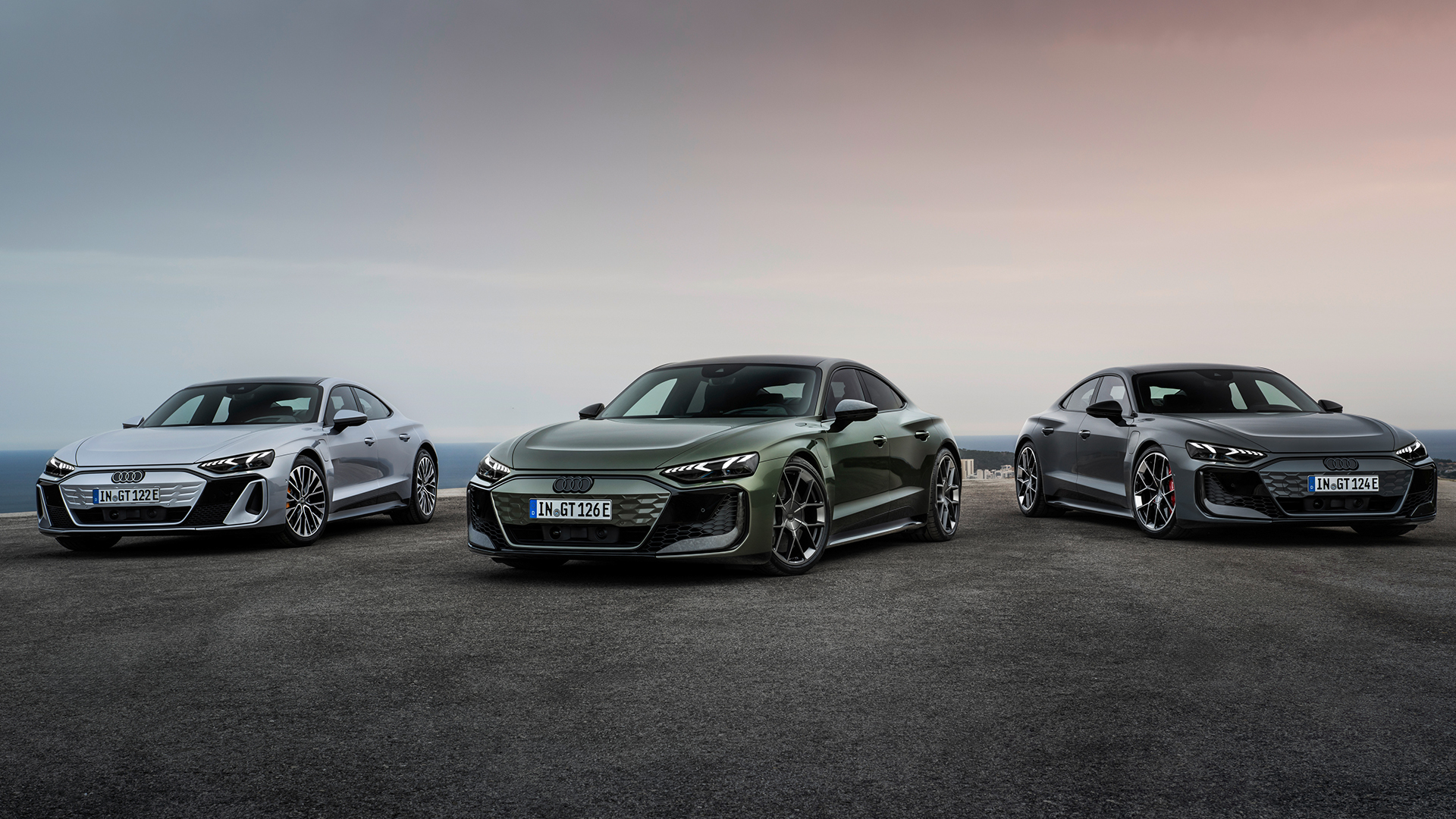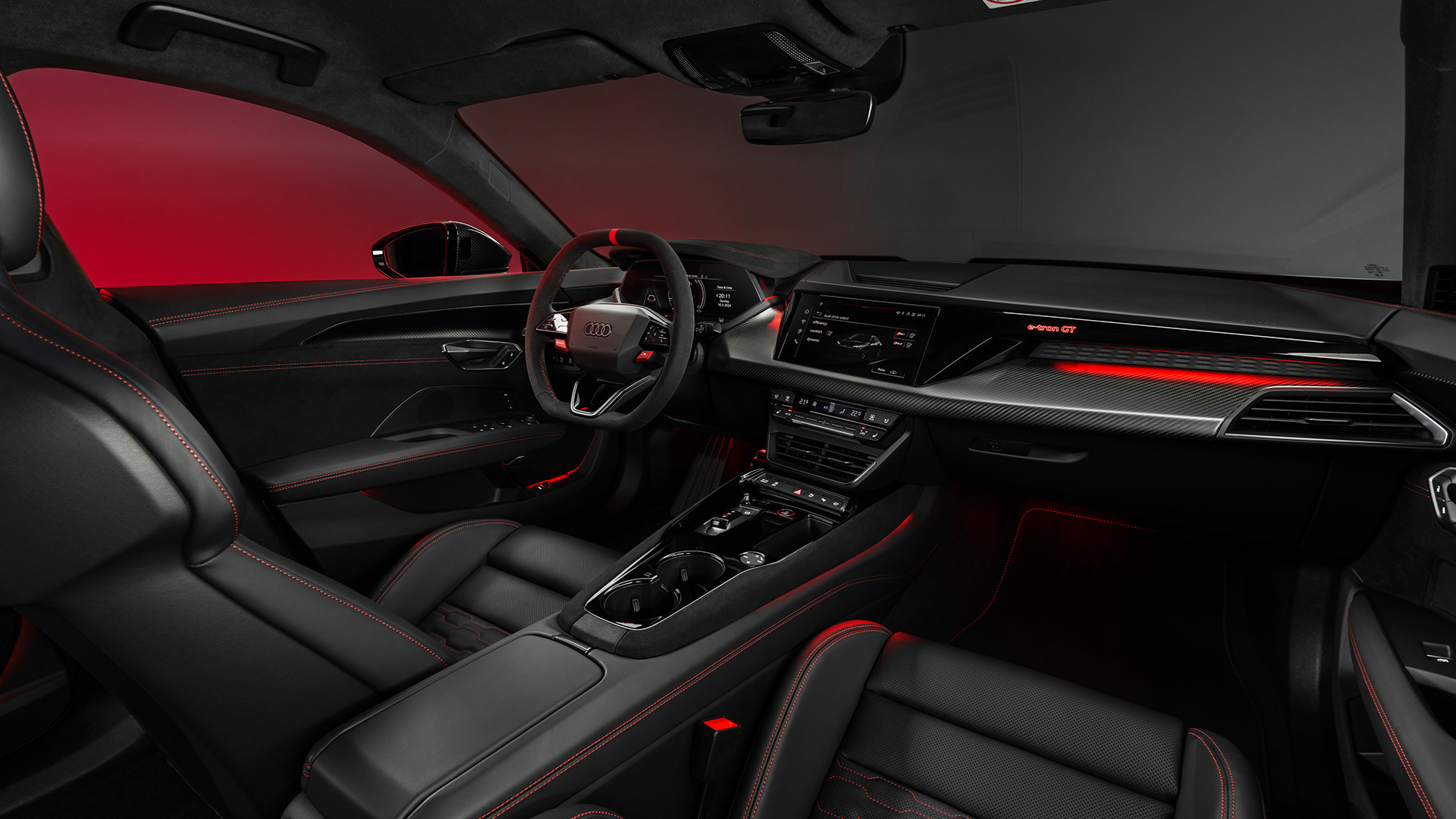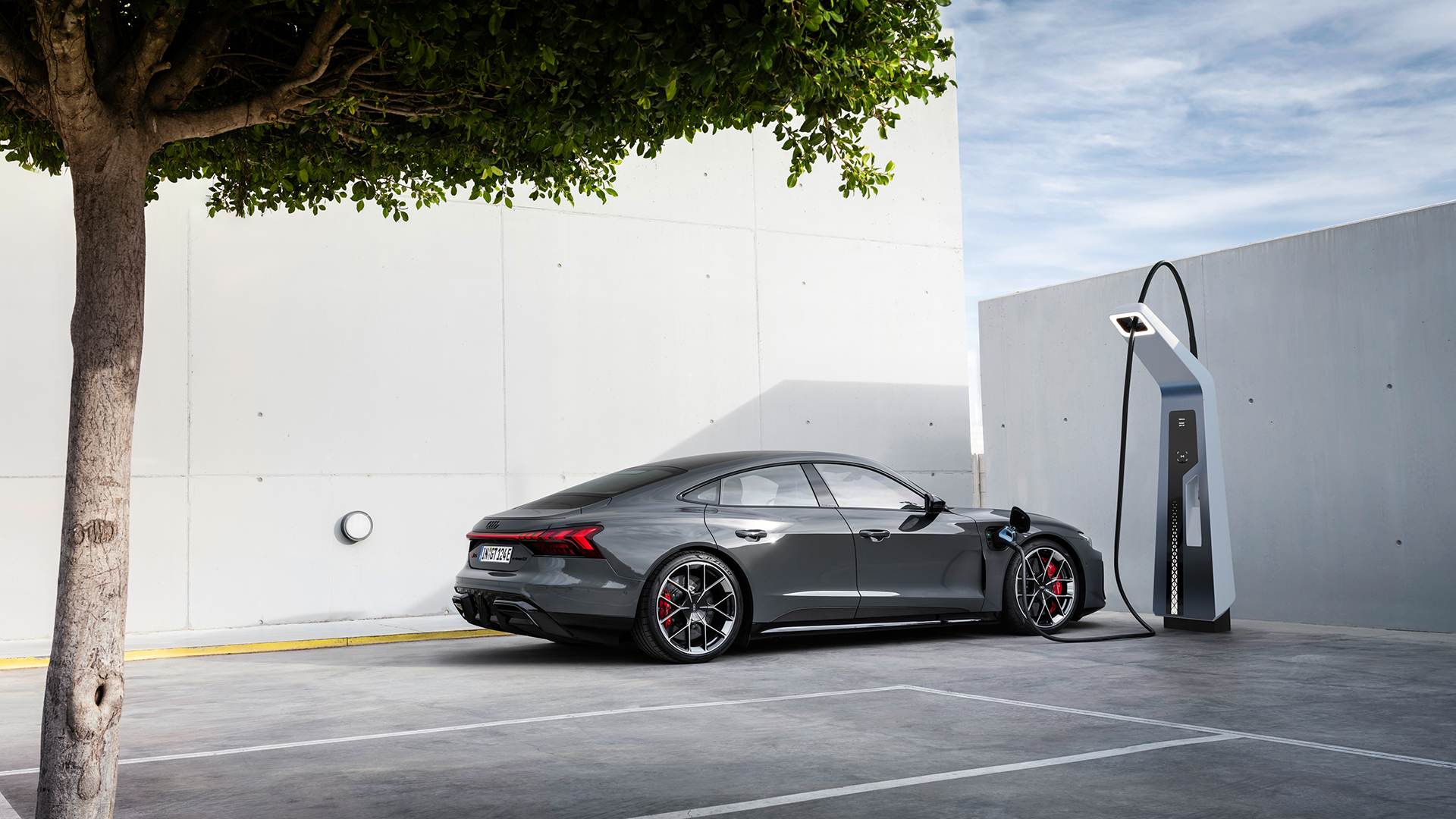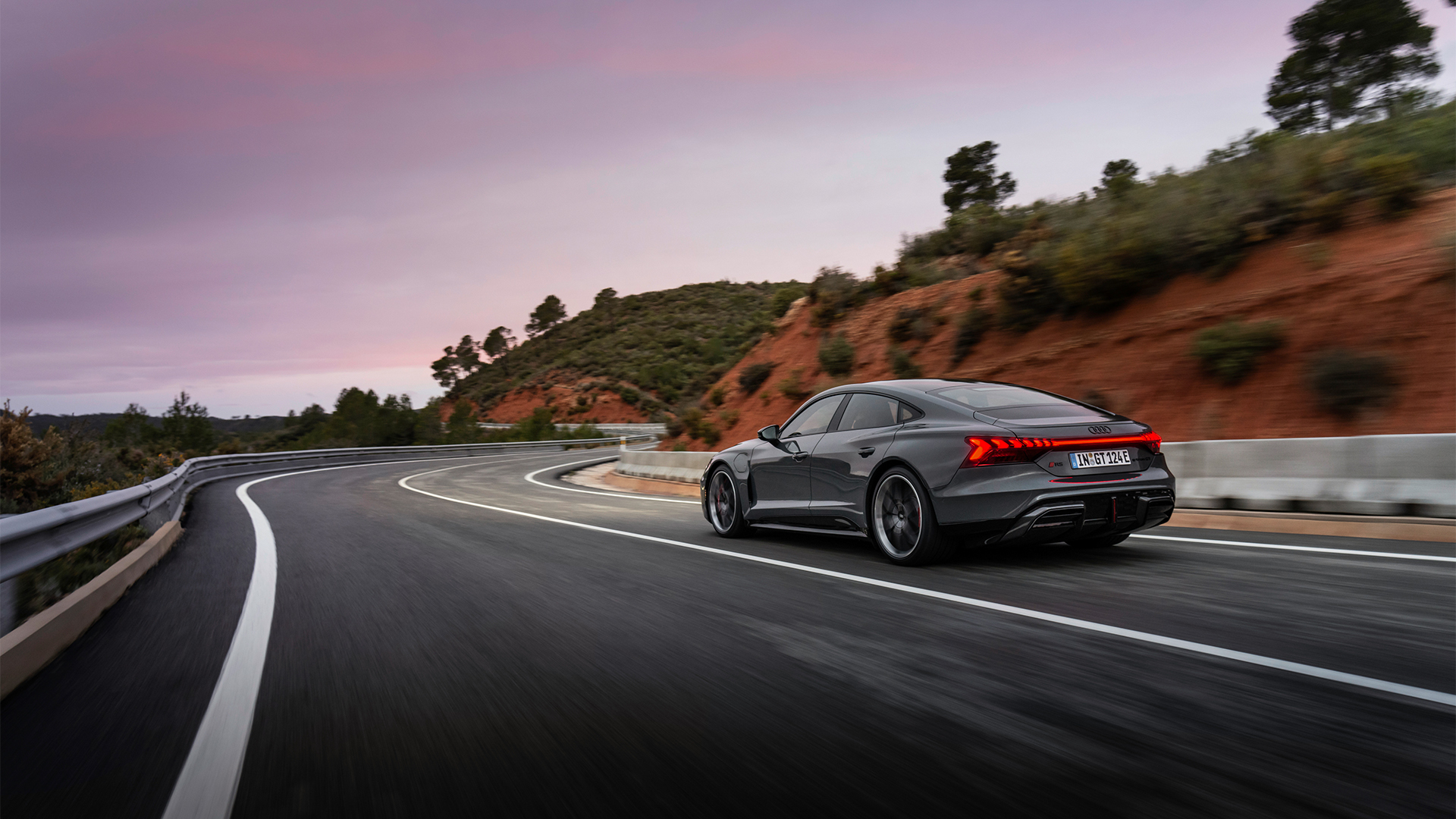Audi's new RS e-tron GT Performance is the most powerful production road car it has ever made
Have we reached peak EV with this 912bhp Grand Tourer?

Audi has revealed its updated e-tron GT line-up, which sports the typical minor tweaks to exterior styling, a flourish of new interior features and a staggering increase in power.
The updates follow similar changes to the Porsche Taycan, a model that Audi borrows much of its chassis and battery technology from.
As a result, the Audi e-tron sees the useable output of its battery packs rise from 84kWh to 97kWh, with maximum charging speeds increasing from 270kW to a peak of 320kW from appropriate fast-charging outlets.
Charging speeds are naturally improved upon, with the high voltage battery charging from 10% to 80% in only 18 minutes via a high-power charging station. In 10 minutes, it can add up to 174 miles of range.

But it is the power output that has caused many to sit up and take notice, as the range-topping RS e-tron GT Performance (clunky, we know) comes packing an eye-watering 912bhp. In this guise, the 0-62mph sprint takes just 2.5 seconds.
To put that into some kind of perspective, the mighty Audi R8 managed around 612bhp from a naturally-aspirated 5.2-litre V10 petrol engine. The ground-breaking but somewhat practical supercar offered a relatively sluggish 0-62mph time of 3.1 seconds.
On the contrary, the latest e-tron GT features four doors, room inside for five and enough space in the boot or trunk for the weekly food shop.
Get daily insight, inspiration and deals in your inbox
Sign up for breaking news, reviews, opinion, top tech deals, and more.

If the full 912bhp isn’t exactly your thing, you could always opt for the 'entry-level' dual-motor version, which is now badged the S e-tron GT and offers the frankly embarrassing power output of 671bhp - still enough to shame a modern Ferrari.
Audi claims the driving experience has also been improved upon with the introduction of air suspension as standard across the range.
There’s also the option of active system that tilts the body into corners and counteracts the forces felt when accelerating and braking - similar to the system we witnessed on the refreshed Porsche Panamera.
In terms of exterior styling, it’s now marginally easier to differentiate between the S and RS models, with the latter boasting a more aggressive front grille with darkened inserts at the edges making it appear wider.
Inside, there is a new flat top and flat bottomed steering wheel with touch sensitive buttons taking care of key car functionality. In the two RS models, there are two large buttons that operate driving modes and initiate customised driving mode settings.
EVs are tearing up the supercar rulebook

For now, pricing has only been made available for the German market, where the new e-tron GT will start at €126,000 for the S model (around $135,300 /£106,500 / AU$203,300), rising to €147,500 for the RS (around $158,400 / £124,670 / AU$238,000) and top out at €160,500 (around $172,400 / £135,650 / $AU259,000) for the RS Performance model.
It is not going to be cheap but with an R8 sized hole in the Audi line-up (production stopped in March of this year), the German marque is turning towards its e-tron to act as a halo performance product that attracts newcomers to its electrified range.
Despite the ridiculous power on tap, e-tron GT arguably won't bring the gut-busting thrills of the outgoing supercar. But there's no denying it is the more technically accomplished and practical pick of the bunch. Proof you can have your cake and eat it in the EV age.
You might also like

Leon has been navigating a world where automotive and tech collide for almost 20 years, reporting on everything from in-car entertainment to robotised manufacturing plants. Currently, EVs are the focus of his attentions, but give it a few years and it will be electric vertical take-off and landing craft. Outside of work hours, he can be found tinkering with distinctly analogue motorcycles, because electric motors are no replacement for an old Honda inline four.